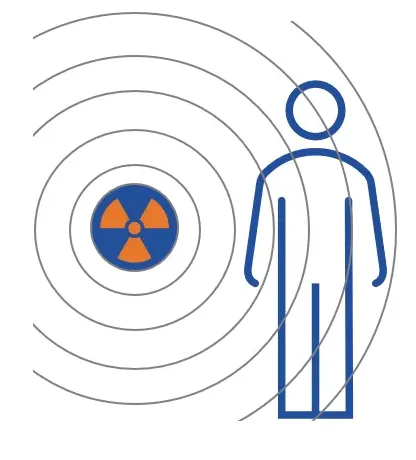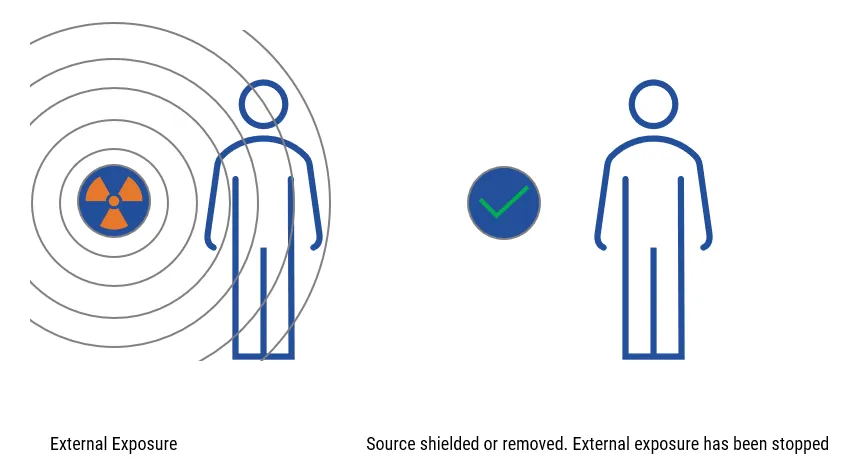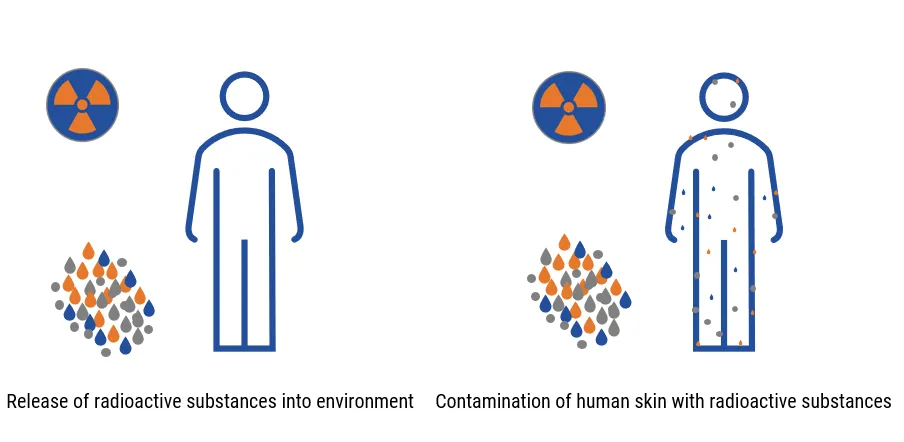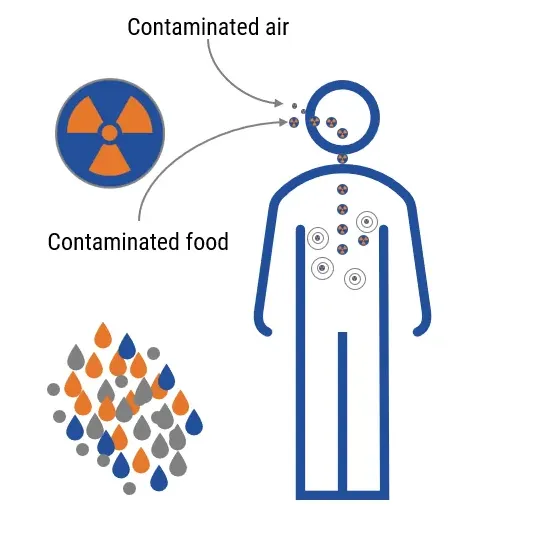External exposure
External exposure means receiving radiation that comes from external radiation sources. In other words, external exposure occurs when you are near a radiation source, for example, if you are doing a chest X-ray, standing next to a working cargo inspection unit, or working in a radioactive contamination zone, etc.
Such exposure to the radiation field does not lead to the fact that the person himself becomes radioactive; the exposure stops as soon as the person leaves the radiation field (when the chest X-ray procedure is completed, or when you have finished working with the inspection unit, etc.).
External exposure occurs mainly from gamma, X-ray, and neutron radiation. Its damaging ability depends on the energy of radiation, the duration of exposure, the distance from the radiation source to the object of exposure, and on protective measures.
The level of external photon exposure of workers, as well as the accumulated dose equivalent, can be monitored by dosimeters. Other than that, it is possible to reduce the level of any external exposure by limiting the working time in the radiation field, working at a distance from the radiation source, using shielding materials, and/or using less active sources, if possible.

External exposure vs. contamination
During external exposure, a person is exposed to radiation as long as he is next to the source of ionizing radiation. If the source of radiation is removed at a sufficient distance or shielded, then its effect on the person will stop, and the person himself will not become a source of radiation.

Contamination
Contamination means that radioactive material in the form of gases, liquids, or solids is released into the environment. It can move vertically and horizontally in space and settle on objects, earth soil, and living organisms. In this case, these objects are contaminated with radionuclides.
Contamination can also occur, for example, as a result of leakage of liquid radioactive materials, or when radionuclides enter plants from contaminated soil, and then into the human body with contaminated food and water.
Radioactive contamination is the process giving rise to the presence of radioactive substances on surfaces and (or) inside the objects of the radioactive contamination control (human body, skin, surrounding objects, soil, air, food, etc.).
Contaminated objects (surfaces, living organisms, food, etc.) remain sources of ionizing radiation until they are decontaminated, the radionuclides do not disintegrate or are removed.
Radionuclides can enter the body in several ways, namely:
- Inhalation – breathing radioactive aerosols or dust
- Ingestion – drinking contaminated water, or eating contaminated food,
- Absorption – entry through intact skin,
- Injection – puncture of skin with an object bearing radioactive materials

Internal exposure
Internal exposure results when the body is contaminated internally with a radionuclide.
Internal radioactive materials produce radiation exposure the entire time they are in the body until the material is no longer radioactive (it decays) or is removed naturally by the body.
Thus, the total time a radioactive substance is in the body is determined by the combination of the radionuclide's physical half-life and its biological half-life.
Biological half-life is the time interval required for the body to eliminate 50% of any substance by normal routes of elimination: metabolic turnover and excretion.
The combination of the radionuclide's physical and biological half-life is called the effective half-life, which is always shorter than its components since they simultaneously contribute to reducing the amount of radionuclides in the body.
